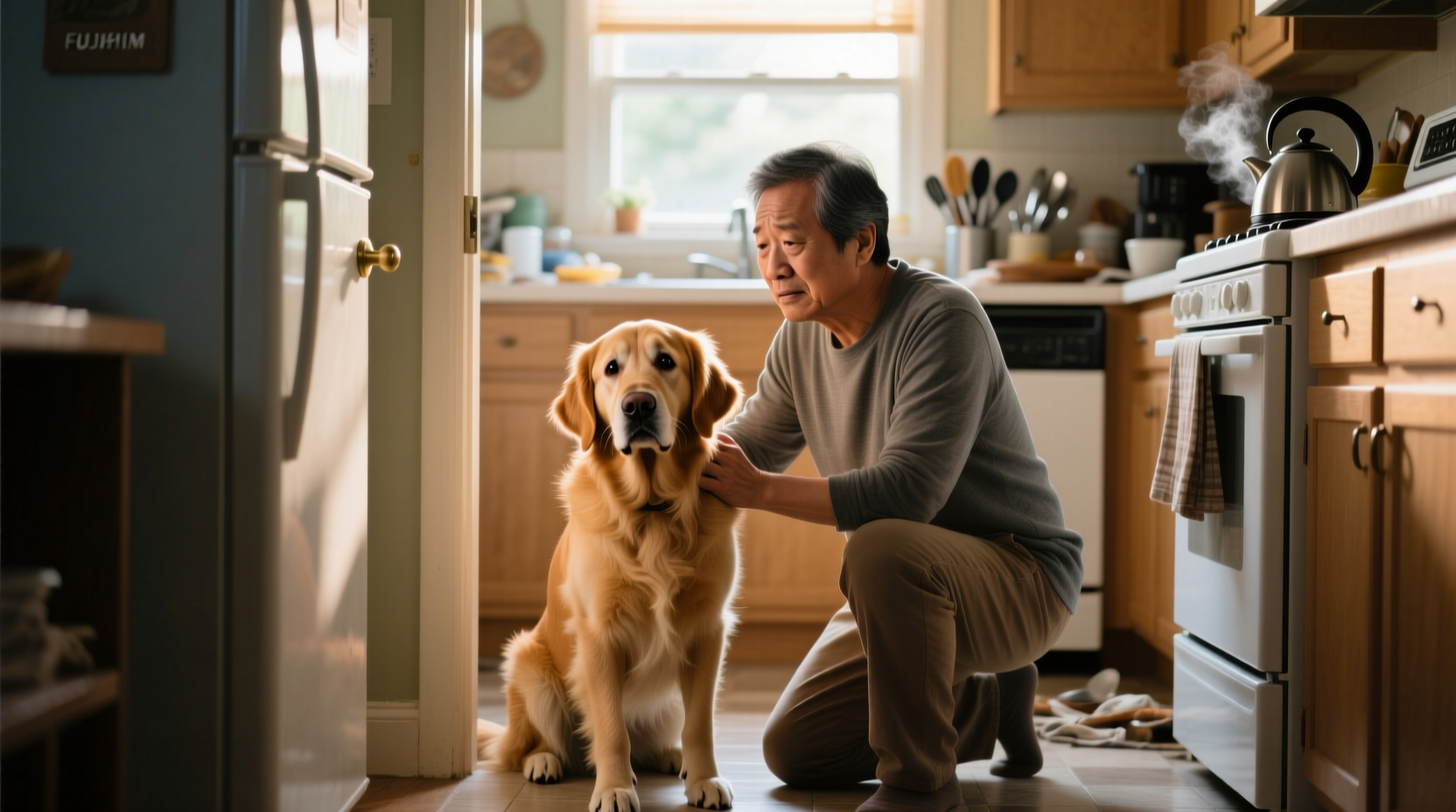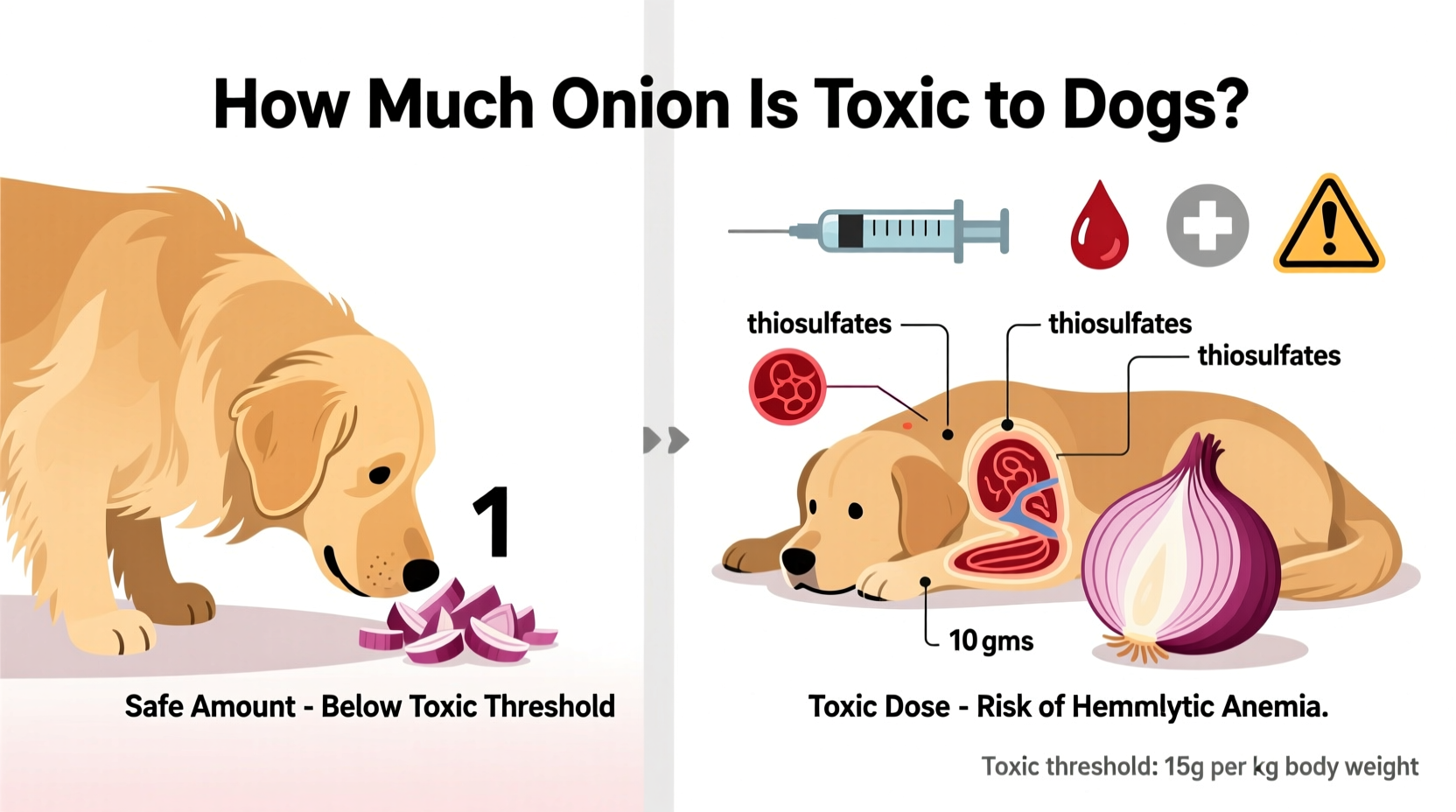Immediate Answer: As little as 0.5% of a dog's body weight in onions can cause toxic effects. For a 20-pound (9 kg) dog, just 1.5 ounces (45 grams) of onion—about one medium-sized onion—can be dangerous. All forms of onion (raw, cooked, powdered) are toxic, and symptoms may appear 24-72 hours after ingestion.
Understanding Onion Toxicity in Dogs: What Every Pet Owner Must Know
Discovering your dog has eaten onions triggers immediate panic. This guide delivers the critical information you need right now, backed by veterinary science. We'll explain exactly how much onion is dangerous for dogs of different sizes, why onions are toxic, what symptoms to watch for, and most importantly—what steps to take immediately if your dog has been exposed.
Why Onions Are Dangerous for Dogs
Onions contain N-propyl disulfide, a compound that damages red blood cells in dogs, leading to hemolytic anemia. Unlike humans, dogs lack the enzyme necessary to metabolize these compounds safely. This toxicity affects all members of the Allium family—including garlic (which is actually 5 times more toxic), leeks, chives, and scallions.
The danger isn't limited to raw onions. Cooked onions, onion powder, and even onion broth retain their toxic properties. Many pet owners don't realize that seemingly harmless foods like baby food, soups, and processed meats often contain onion powder as an ingredient.

How Much Onion Is Toxic? Critical Thresholds by Size
The toxic dose varies significantly based on your dog's weight. Smaller breeds face greater risk from smaller amounts. The general guideline is that ingestion of approximately 15 to 30 grams of onion per kilogram of body weight can cause toxic effects. To put this in perspective:
| Dog Weight | Minimum Toxic Amount | Equivalent Household Measure |
|---|---|---|
| 10 lbs (4.5 kg) | 21-42 grams | 1/4 medium onion or 2 tsp onion powder |
| 20 lbs (9 kg) | 45-90 grams | 1/2 medium onion or 4 tsp onion powder |
| 50 lbs (23 kg) | 115-230 grams | 1.5 medium onions or 1/4 cup onion powder |
| 100 lbs (45 kg) | 225-450 grams | 3 medium onions or 1/2 cup onion powder |
According to research published by the Cornell Feline Health Center, toxicity can occur from a single large ingestion or from repeated smaller exposures over time. This cumulative effect means that even small amounts in daily meals can become dangerous.
Symptom Timeline: What to Watch For in the Critical First 72 Hours
Unlike some toxins that cause immediate vomiting, onion poisoning symptoms often develop gradually. Understanding this timeline is crucial for timely intervention:
- 0-24 hours: Your dog may appear normal or show mild gastrointestinal upset (vomiting, diarrhea, decreased appetite)
- 24-48 hours: Early signs of hemolytic anemia emerge—lethargy, weakness, pale gums, increased heart rate
- 48-72 hours: Critical symptoms develop—dark urine (from hemoglobin), labored breathing, collapse
The ASPCA Animal Poison Control Center emphasizes that symptoms may not appear until several days after ingestion, which is why immediate veterinary consultation is essential even if your dog seems fine initially.
Immediate Action Plan: What to Do If Your Dog Ate Onions
If you suspect your dog has consumed onions, follow these steps immediately:
- Calculate the amount ingested: Estimate how much onion (in grams or household measurements) your dog consumed relative to their weight
- Contact your veterinarian or animal poison control: The ASPCA Animal Poison Control Center (888-426-4435) or Pet Poison Helpline (855-764-7661) can provide immediate guidance
- Do not induce vomiting without professional advice: In some cases, inducing vomiting can cause additional complications
- Bring packaging or food sample: If possible, bring the container or remaining food to help veterinarians determine the exact onion content
- Monitor closely for symptoms: Keep detailed notes on behavior changes, appetite, and bathroom habits
Veterinary treatment may include induced vomiting (if recent ingestion), activated charcoal to prevent absorption, intravenous fluids, and in severe cases, blood transfusions. Early intervention dramatically improves outcomes.
Preventing Onion Exposure: Practical Safety Measures
Prevention is always better than treatment. Implement these strategies to protect your dog:
- Secure food storage: Keep onions and onion-containing foods in cabinets dogs cannot access
- Be ingredient-aware: Check labels on baby food, soups, broths, and processed meats for onion powder
- Train family members: Ensure everyone in your household understands the dangers of feeding table scraps
- Supervise meal preparation: Keep dogs out of the kitchen during cooking when onions are being used
- Dispose of scraps properly: Use secured trash cans that dogs cannot open
Remember that garlic presents an even greater risk—just one clove can be toxic to small dogs. The cumulative nature of Allium toxicity means that repeated small exposures (like daily table scraps containing onion) can be just as dangerous as a single large ingestion.
When Small Amounts Become Dangerous: Context Matters
While the general toxicity threshold provides guidance, several factors can increase risk at lower exposure levels:
- Dog's age: Puppies and senior dogs have less resilient systems
- Underlying health conditions: Dogs with pre-existing anemia or kidney issues face higher risk
- Breed sensitivity: Japanese breeds like Shiba Inus and Akita may be more susceptible
- Concurrent medications: Certain drugs can exacerbate the toxic effects
The Veterinary Partner notes that some dogs may show sensitivity to smaller amounts than the general threshold suggests. When in doubt, always consult your veterinarian rather than waiting for symptoms to appear.











 浙公网安备
33010002000092号
浙公网安备
33010002000092号 浙B2-20120091-4
浙B2-20120091-4